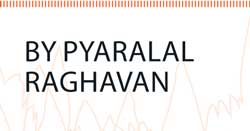21 Apr 2017 - {{hitsCtrl.values.hits}}
 The Times of India: This is something that very few would have believed a few decades back. According to the World Bank study, Globalization Backlash, released last week, South Asia remains the fastest growing region in the world mainly due to the performance of the nations in the east, especially Bhutan, Bangladesh and India.
The Times of India: This is something that very few would have believed a few decades back. According to the World Bank study, Globalization Backlash, released last week, South Asia remains the fastest growing region in the world mainly due to the performance of the nations in the east, especially Bhutan, Bangladesh and India.
While Bhutan and India clocked 6.8 percent growth each in 2016, Bangladesh grew by a still higher 7.1 percent. This pushed up South Asia’s growth to 6.7 percent as compared to 6.3 percent growth in much celebrated East Asia.
However, this scenario is expected to be reversed in 2017 when India’s growth picks up to 7.2 percent while Bhutan and Bangladesh register a 6.8 percent growth each. What is even more significant is that six of the eight South Asian nations will witness an uptrend in 2017. The biggest gainer is to be Nepal, where growth will pick up from earthquake-ravaged 0.6 percent in 2016 to 6 percent
in 2017.
The gains will be minimal in Afghanistan even when growth doubles from 1.2 percent to 2.4 percent during this period. Gains in the Maldives, Sri Lanka and Pakistan will also be limited with the growth rates moving up to 4.5 percent, 4.7 percent and 5.2 percent, respectively.
Surprisingly, the leading economies in South Asia were powered by different factors in 2016. While Bhutan, the fastest growing economy, was buoyed up by the gains in the energy sector from the hydroelectric plants that in Bangladesh was fuelled by investments and exports which accelerated industrial growth to a record high. In India’s case, it was strong urban consumption and good agriculture production that boosted growth. A factor common to both India and Pakistan is that stock markets are on a high, reflecting all round optimism. But the long-term prospects of South Asia are under threat mainly because investments have been falling since 2011 and East Asia has edged out South Asia from the top position. Another reason for caution is the appreciation of most South Asian currencies that makes exports less competitive. Similarly, remittances are still below the levels at the time of crash in oil prices. However, this has been compensated to some extent by the short-term capital flows which continued despite the hike in interest rates in the US. Another drawback is that South Asia remains one of the most indebted regions with its debt gross domestic product (GDP) ratio of above 60 percent, just a little lower than in the Middle Eastern and North African regions. The situation is especially bad in Sri Lanka, India and Pakistan where the debt ratio is in the 65-75 percent range. In contrast, in Nepal and Bangladesh, the debt ratios are only around a third of GDP.
The report notes that India’s demonetization drive has helped increase the velocity of money, which is the number of times the same rupee is used to buy and sell goods in one year, which almost doubled from 2.2 percent in the pre-demonetization phase to above 4 and has remained above 3 in March 2017. This is because the currency in circulation fell to 55 percent of the pre-demonetization in December and has only climbed back to just around 70
percent now.
India’s growth is expected to get a boost from an investment recovery especially in the private sector. The pickup in growth in advanced economies will also provide new momentum to exports from the region. It also notes that the restrictions on the entry of professionals to the US may end up increasing foreign direct investment (FDI) flows to India.
But the most surprising part of the study is the finding that South Asia may not have much to lose from the growing protection across the globe especially if the rise in trade barriers is not steep. In fact, it notes that the collapse of the Trans-Pacific Partnership (TPP) and Trans-Atlantic Trade and Investment Partnership (TTIP) free trade agreements will even give a boost to South Asian trade. It notes that a one percent increase in GDP in the United States or Euro areas causes the South Asian GDP to rise by more than one percent over
a year.
09 Jan 2025 1 hours ago
09 Jan 2025 2 hours ago
09 Jan 2025 2 hours ago
09 Jan 2025 2 hours ago
09 Jan 2025 2 hours ago